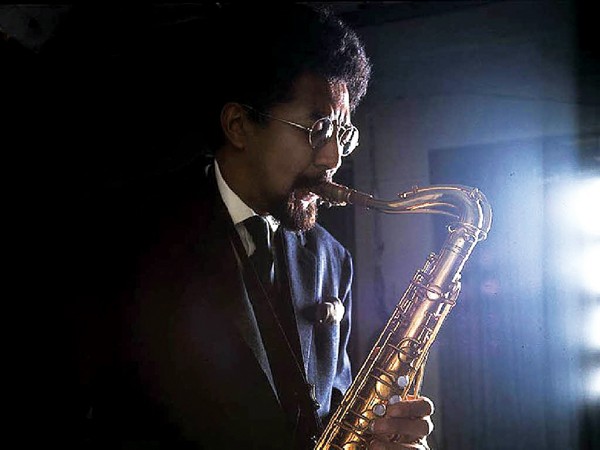In one of the first scenes of the 2012 documentary Charles Lloyd: Arrows Into Infinity, recently released on DVD and Blu-ray, the saxophonist tells a radio interviewer, “I’m a Pisces, the water sign . . . When I was born, when my mother was pregnant, there was a big flood in Memphis. This thing was set up for me to come.” The quote is followed by a few bars of Sam Cooke’s “A Change Is Gonna Come.” It may seem an odd way to begin a film about a jazz saxophonist, but Lloyd is nothing if not enigmatic. With him, a change was always sure to come.
Born in Memphis in 1938, Lloyd attended Manassas High School and earned his chops playing with the likes of Howlin’ Wolf and B.B. King. His parents would put up Duke Ellington and Billy Eckstine when those stars passed through town. Lewie Steinberg, the original bassist for the MGs (that’s him you hear on the 1962 recording of “Green Onions”) says, “The first dollar I ever made was with Charles Lloyd, bless him.”

Charles Lloyd
Lloyd eventually moved to New York where, during the 1960s, he managed crossover success that few have experienced in any genre. Having first migrated from blues to jazz, he then ventured into the pop and rock worlds. San Francisco bands such as the Grateful Dead and Jefferson Airplane were eager to play on bills with him. “He captivated all of us,” says John Densmore, drummer for the Doors.
Pianist Herbie Hancock calls Lloyd a “jazz rockstar.” Lloyd played both jazz and pop festivals and was the first jazz artist to play live at the iconic Fillmore Auditorium. His 1966 album Forest Flower, recorded live (without his knowledge, he intimates on camera) at the Monterey Jazz Festival, is still considered one of the great jazz LPs of all time.
By the ’70s, Lloyd, a deeply spiritual man, had had enough of the music business and the demands it placed on him. He simply walked away and, like Greta Garbo and J.D. Salinger, became famously reclusive on a plot of land in Big Sur, California. “You can’t shoot an arrow into infinity if you’re always in motion,” he says in the opening scene. “You have to pull the bow back, then the arrow can fly.”
Directors Jeffery Morse and Dorothy Darr, who is Lloyd’s wife, do a masterful job of capturing the artist’s life in motion. There are beautiful shots of him walking along forested roads and surf-beaten beaches as well as in recording studios and onstage — all environments where Lloyd flourishes.
Through Darr’s personal connection, it’s obvious she knew the questions to ask and of whom to ask them. Interviews with the likes of Hancock, the Band’s Robbie Robertson, producer Don Was, and Darr herself give us an intimate look at a man who flew through the air like an arrow before going away to recharge.
He came back to the world in the late ’80s after a near-death experience that is mentioned, though not expanded upon. “I came out of that, and I rededicated myself to this beautiful tradition,” he says.
With the help of longtime friend, jazz drummer Billy Higgins, he began recording and touring again. In one of the film’s most touching scenes, Lloyd wraps a blanket around his old friend’s shoulders as Higgins, suffering from liver failure, nears the end of his life.
This is an important film as Lloyd is a bridge between the music’s architects – Ellington, Basie, Coltrane, Bird – and today. “It’s the wisdom of the ancients with modernity,” Lloyd says of today’s jazz. “It’s arrows into infinity.”